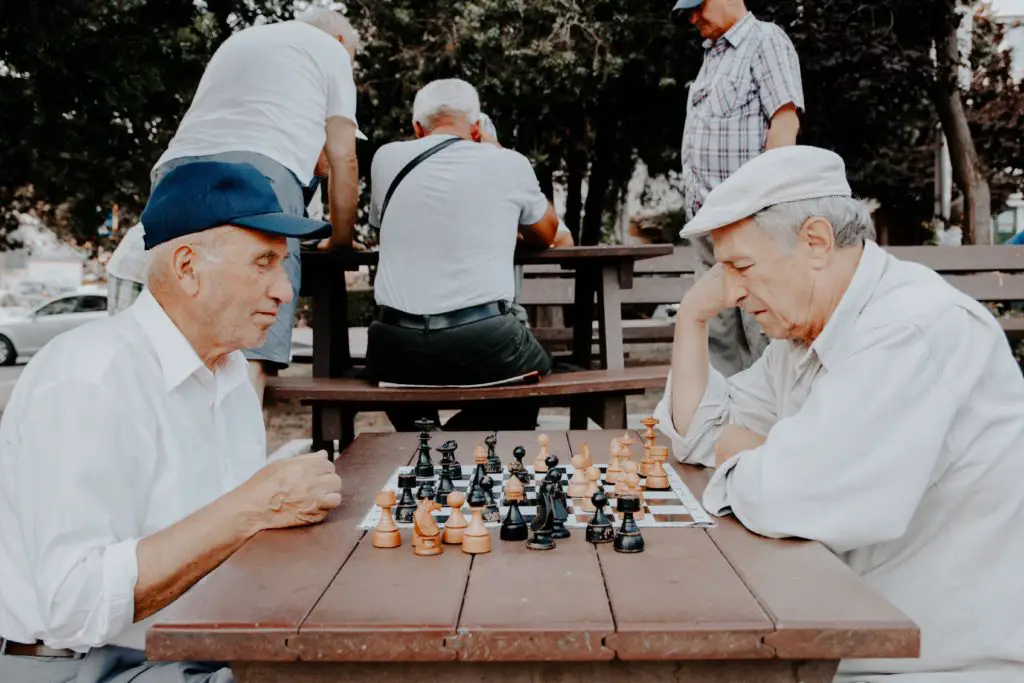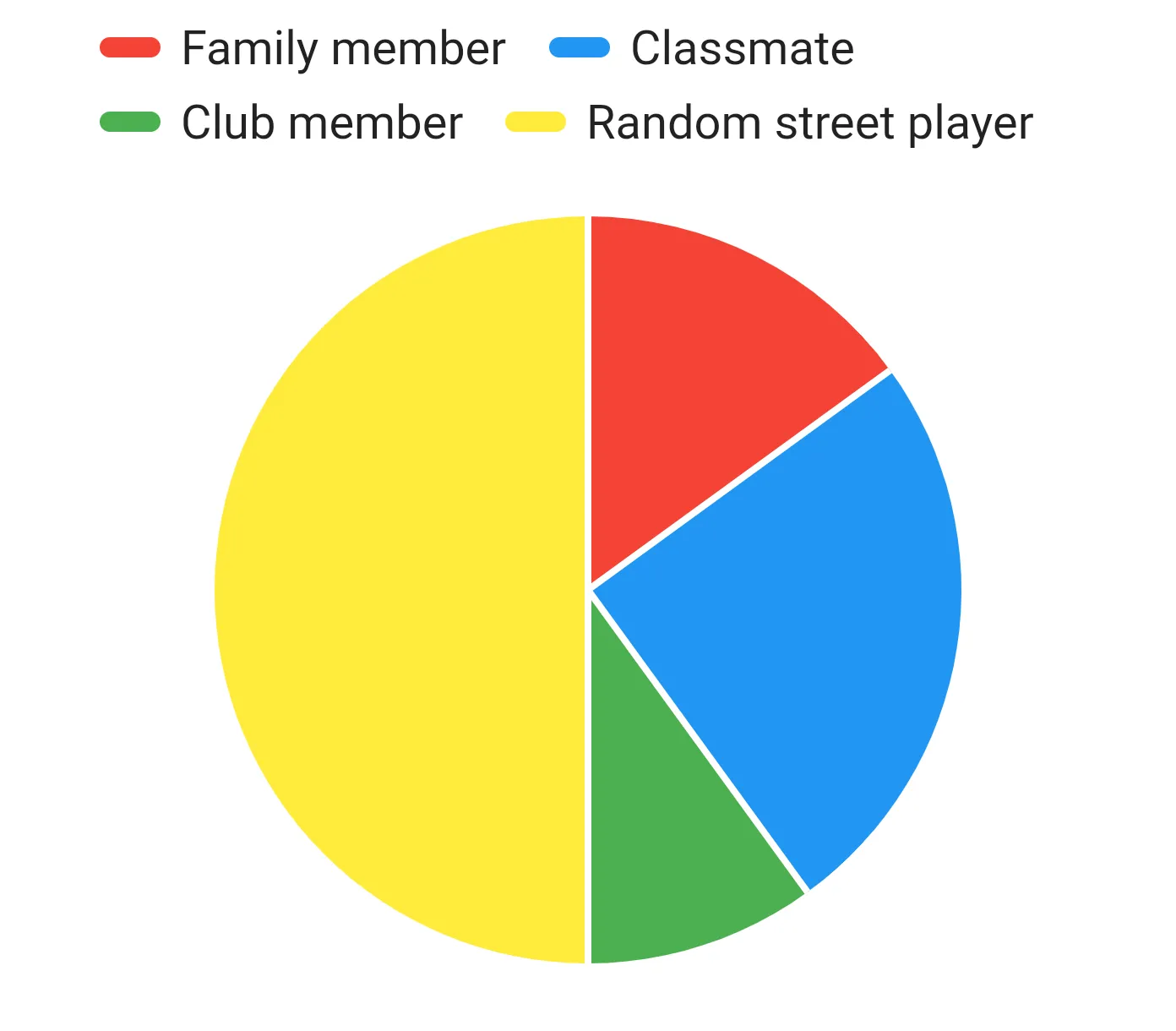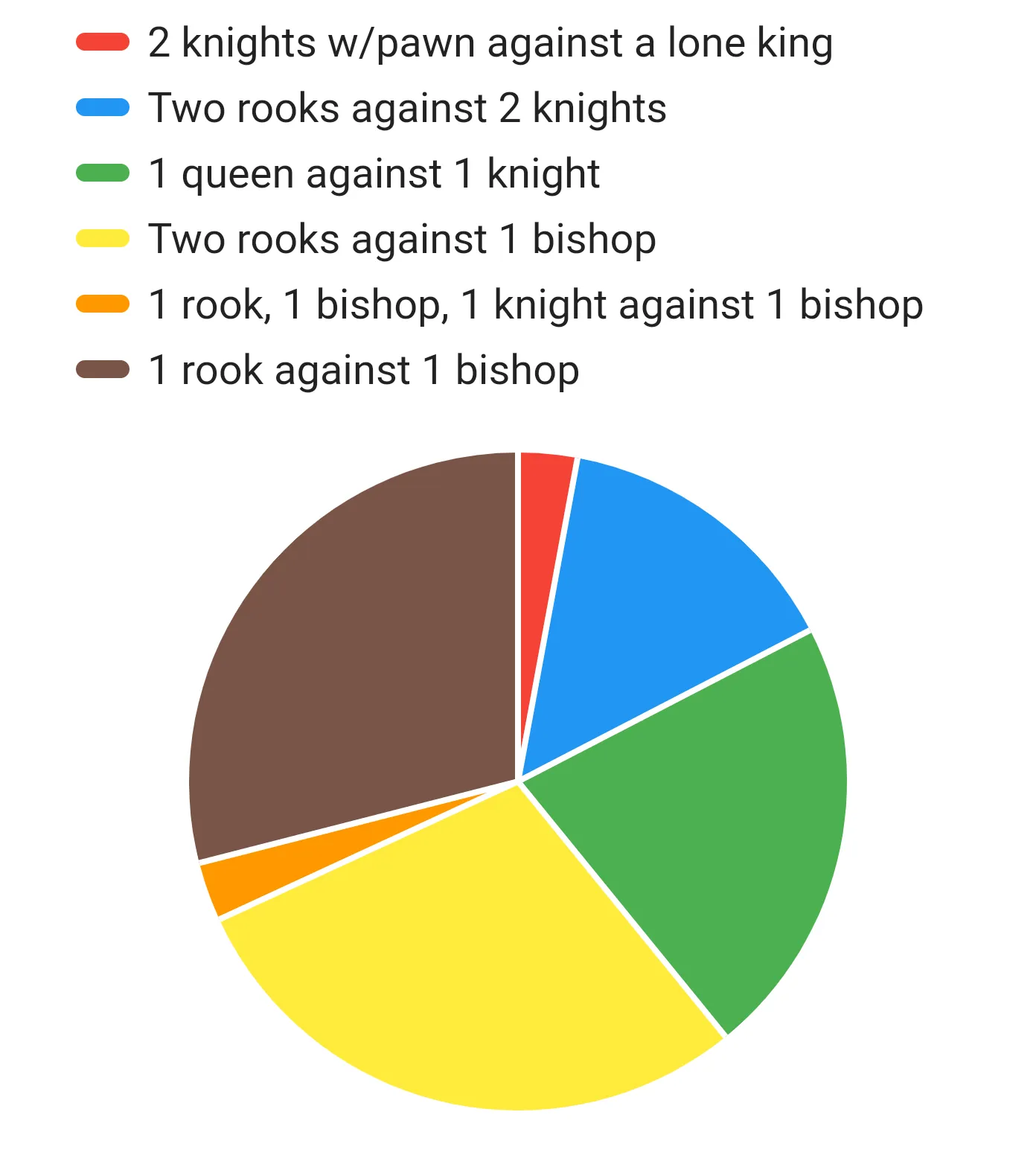16 Move Rule + Other Endgame Rules in Chess Explained
There is no 16 move rule in chess. In formal chess competitions there will be no stalemate even after 16 moves of no checkmate. Even when a player has only a king left there will be no 16 move countdown before a stalemate. There is a 50 move rule though where the count is reset whenever a pawn moves.
Yes, you heard it correctly. There has been stirring confusion to a lot of chess players especially those who’re just beginning to learn the game.
Some players only learned how to play from their neighbor, friends, or even their father! And I completely understand as I was the same breed altogether.
The problem with learning chess this way would be the tendency to understand much more convoluted rules than what is practiced in an actual formal (FIDE) tournament setting.
What is the 16 move rule in chess?
The 16 move rule states that the game is automatically drawn if a lone king is not checkmated within 16 moves. The count will not start as long as there is still a pawn or piece in the board. Consequently the count will start as soon as one side loses their last piece or pawns.
Street chess promoted the 16 move rule

Now, I may have talked about this a little bit in the intro, but there are definitely practices acceptable in street chess that is nowhere to be found in the actual international regulation for the game.
As we all grew in the plain street for most of our chess background, we are kinda used to playing with this rule in mind. I live in the Philippines and I may not know where you’re coming from.
Formal games take the winner of the game very seriously and make strict rules to secure the actual victors.
Street Chess however, doesn’t care about the winners!
They care about the audience, where games with very limited pieces left on the board make the winner very clear which is not interesting. This rule ensures that an unexpected result could still unfold even very late in the game.

The 16 move rule
The 16 moves rule states that in the end game where one player has only a king left with no pawns or other pieces, that side would have the opportunity to draw out the game if not checkmated within 16 moves.
The count starts very similarly to how an actual formal game is recorded, where two moves equating from both players be counted as one.
With this in mind, referring to the sixteen move rule is actually a 32 move total count for both players if one player actually managed to achieve the full 16 goals.
It is important to note that the count only takes into effect when one of the players has managed to remove all of his or her other pieces of the board.
This includes pieces ranging from the Pawn, Knight, Bishop, etc. basically all other pieces except the king, which should be the only thing left on the board.
If even just one pawn exists, the count should be non-eligible and the other player can take the time to deliver the checkmate without minding the count.
This means that it will be avoided altogether if the winning side just left the opposing one with even just a single pawn.
This would of course cause a heck lot of problems in an actual game since accomplishing a checkmate with limited pieces (especially in the endgame) usually takes more than 16 moves.

Is there a 13 move stalemate in chess?
There are no 13 move stalemate rule in chess. When a lone king is about to be checkmated there are no 13 move rule that can lead to a stalemate. Most checkmates take more than 13 moves to accomplish. Ending the game with a stalemate in only 13 moves is quite unfair.
Is there a 14 move rule in chess?
There is no 14 move rule in chess. After the last pawns or pieces has been captured no 14 stalemate count should take place. A side that only has a king cannot draw the game even if there are still no checkmate within 14 moves.
Is there a 15 move rule in chess?
There is no 15 move rule in chess. A stalemate will not occur even if a lone king with no pawns or pieces evaded a checkmate within 15 moves. Thegame will continue as usual since the 15 move stalemate rule in itself is just a myth.
Does stalemate have 25 moves?
There is no 25 move stalemate rule in chess. The game will continue without a count when the enemy king is all alone. Even when all of the pawns or pieces have been captured no 25 move count will start. The 25 move rule is just a myth.
What is 50 step rule in chess?
There is a 50 move stalemate rule in chess. When both players haven’t moved or captured a pawn in the last 50 moves then the game will be drawn. The count resets when a pawn is moved or captured. This applies from the beginning of the game up to the end. The 50 move stalemate rule can even occur in the middlegame.
50 move rule: Counterpart of the 16 move rule
There is no such thing as a 16 move rule however, there is a legal 50 move rule every player must be aware of before entering any serious tournament.
This is a rule established by FIDE regulations and is usually applicable to most countries around the world.
FIDE rule 9.3.2 (The drawn game) “the last 50 moves by each player have been completed without the movement of any pawn and without any capture”.
https://handbook.fide.com/
The rule states that if neither of the players has moved a pawn or made any capture in the last 50 moves then the game is eligible to be called for a draw.
The count doesn’t take into consideration the piece count nor the pawn count, just the fact that a pawn hasn’t moved at all during the period of the rule.
It is important to know the second line “made any capture” which means the count could only start from the last turn a piece has been taken off the board, not just that of the pawn.
This is a very important concept to prevent players from calling draws just before an end game where it is legitimate to do so.
Otherwise, a special occasion may arise where a player can call a draw during a middle game, just for the fact that the pawn stayed in the same place.
Does the 50 move rule even happen?
Now, I know not moving any pawns for 50 moves seems bizarrely unrealistic lol. But I mean anything can happen, people have been surprising before, and things should receive some clarity before it gets messy.
The two requirements ensure that the game is to a phase where one player is seeking the win from a very dubious endgame position. While the other tries to defend properly from the possible checkmate, that’s it!
The very 50 move rule has been formatted to solve this specific situation. Both players in this case, have the discretion whether to make the whole meaning of the rule is non-compulsory for both players.
The game could very well continue if both parties decided to do so.
Is there a 75 move rule in chess?
There is a 75 move stalemate rule in chess. When both players haven’t moved or captured a pawn in the last 75 moves then the game will be drawn.
This rule is enforced when both players refuse to honor the 50 move rule andkeeps on playing. The arbiter shall draw the game after the 75th move has been played.
There is a 75 move rule for the average arbiter to lay down if the position is just really drawn. This is to prevent both parties from making unnecessary extensions to their game.
Again, many endgame checkmate combinations just take more than 16 moves which is hardly any concrete number to actually signify a drawn position.
50 chances to checkmate should be enough to convert any theoretically won position into an actual victory not to mention 75.
There have been of course cases where this is not enough. The player then would bear responsibility for the missed opportunity, as this should be more than enough if the player could actually convert.
75 move rule: Similar to 16 move rule
Bridging from the 50 moves on, there’s actually another concept that I have briefly touched on earlier in the article which is the 75 move rule!
This newly enforced rule from 2016 (well not new, but much more recent compared to other regulations) is similar to the fifty moves by its intended purpose, but with key differences.

FIDE rule 9.6.2 (the drawn game) any series of at least 75 moves have been made by each player without the movement of any pawn and without any capture. If the last move resulted in a checkmate, that shall take precedence.
https://handbook.fide.com/
75 move rule states that if both player’s moves sum up a total of 75 turns (where two moves from both sides are counted as one official move) since the last time a pawn has been advanced or any piece has initiated a capture (including the pawn), the game should officially be considered a draw regardless as the player’s actions and sentiments for the call.
This is the big difference from the previous 50 move rule and how it becomes similar to our original 16 moves or 10, 12 whatever. In which the player does not have the ability to play above the statement of the rule.
The regulation is compulsory as it needed to be for it to serve the intended purpose in the first place, which is to stop an overly stretch game that has become dull or even appear as a pointless attempt. 75 moves after all is a heck lot of turns.
I mean some games (full games) don’t even reach the 40 move mark.
Is the 75 move rule for organizers and arbiters?
This one in particular is specifically crafted for organizers to have a smooth fluid tournament setting, in which the outcomes should be conveniently displayed as quickly as possible for live ratings and the public in general.
Organizers after all have a job too, which is to sell the tournament experience or promote a brand, etc. which is not that possible if every game (or at least most of them) last for more than 75 moves or so (taking into account not just the beginning of the 75 of count but the prior move found at the start of the rule).
It is similar to our main 16 move rule in a way that the players are not taken into consideration when making the draw, as well as making the entire move count invalid if a checkmate accomplished in that period of time.
I mean the 50 move rule also has those characteristics, just that the players do have the power to make the decision in that case.
With this in mind, this rule is specifically targeting the arbiter in mind over the players, in which the said middleman should interfere when observing a really drawn out game.
Why is there a need for 75 move rule?
This is because players potentially could lose track of moves due to low time pressures likely encountered in that phase of the game (where the winner is to be identified).
The players could of course call the arbiter themselves (I mean obviously ) but the focus in their own particular games could possibly get in the way of doing so.
It is the job of the arbiter in this case, to serve and administer the regulation when it’s necessary via the rules of FIDE.
In cases where the players failed to realize the 75 move mark and still played on however the result after the fact, it should be considered void and illegitimate to the actual outcome of the event.
This also might have been put into place to prevent time flagging (making opponents lose on time) as players are likely to suffer at this point in time.
Featured questions and answer
How many moves in chess is stalemate after king is left?
No amount of moves after the king is left can ever result in a stalemate. There is a 50 move rule but it can still occur even if there are other pawns or pieces with the king. The game will not be drawn just because the king is the only one left on the board.
Does chess.com have 50 move rule?
Chess.com do have a 50 move rule. From the moment a pawn is moved or captured the count will start. If no pawns have been captured or moved in the last 50 moves then both players will be given an option to draw the game. The system automatically count the moves for the users.
Does lichess have 50 move rule?
Lichess do have a 50 move rule. Once 50 moves has been played with no pawns being moved or captured a draw can be declared. It will show up in the interface of both players which can he manually triggered. The system does the counting for the players.
Conclusion
Whoosh! That’s a ride, I hope I covered all your possible questions regarding the suspicious 16,10, or 12 move rule, along with a decent understanding of the legit and practiced 50/75 move rule in a formal setting.
Just remember the prior made-up rules are not official! You can of course play it with your friends even if it’s not official, but it’s better to stick in the correct way to play.
There is no 16 move rule in chess. There is a 50 move rule where a player can announce a draw if no capture has been made or no pawn has been moved in the last 50 moves, and a 75 move rule for the arbiter if there is no capture/pawn moves in the last 75 moves.
That would actually be put into use in most of your Chess journey online or offline anyway so better do it now, have fun playing Chess!
